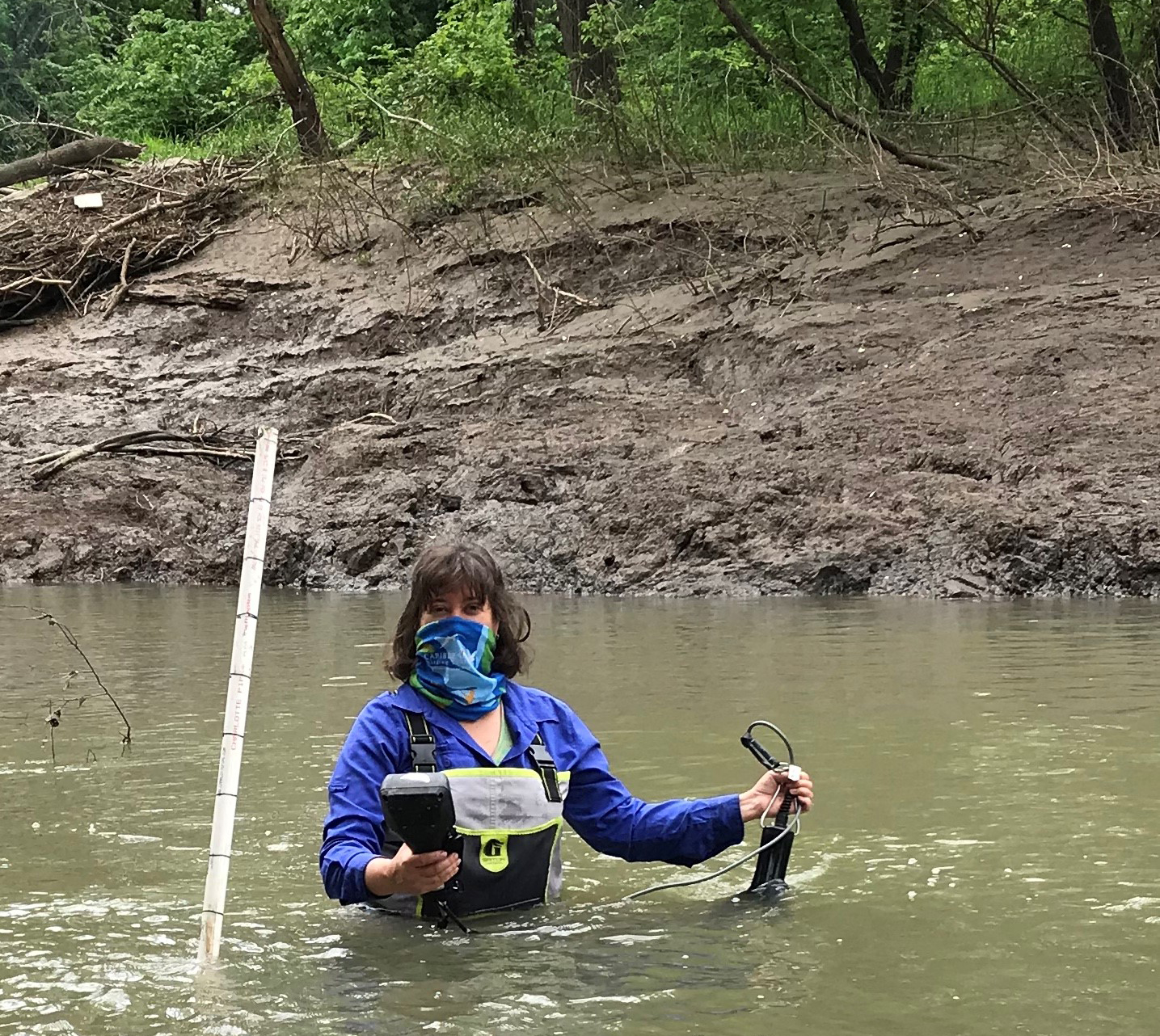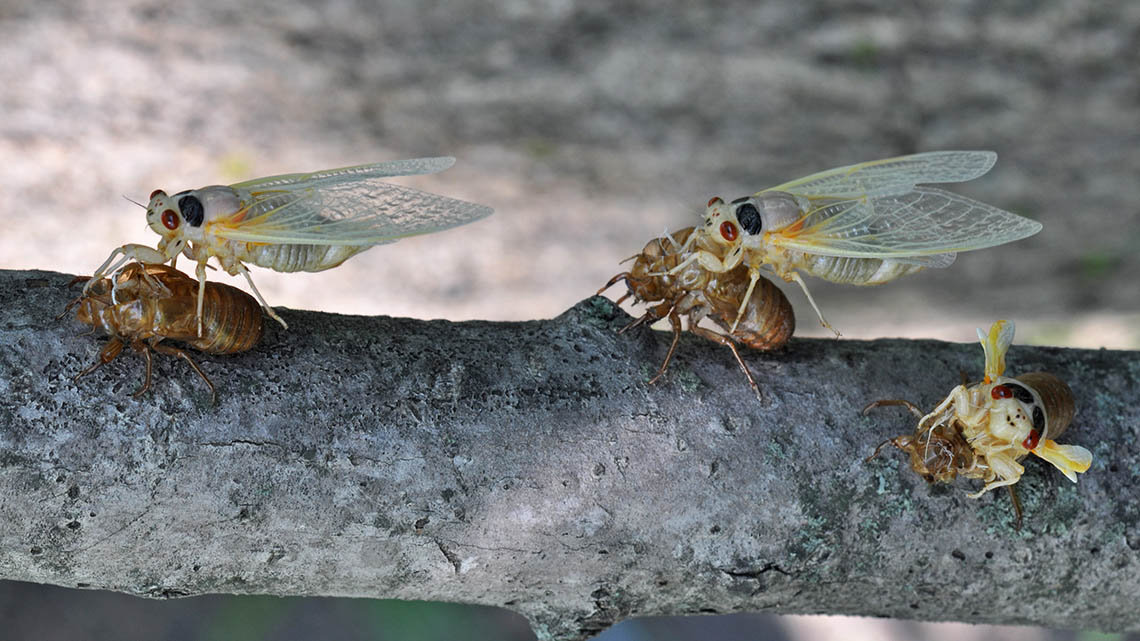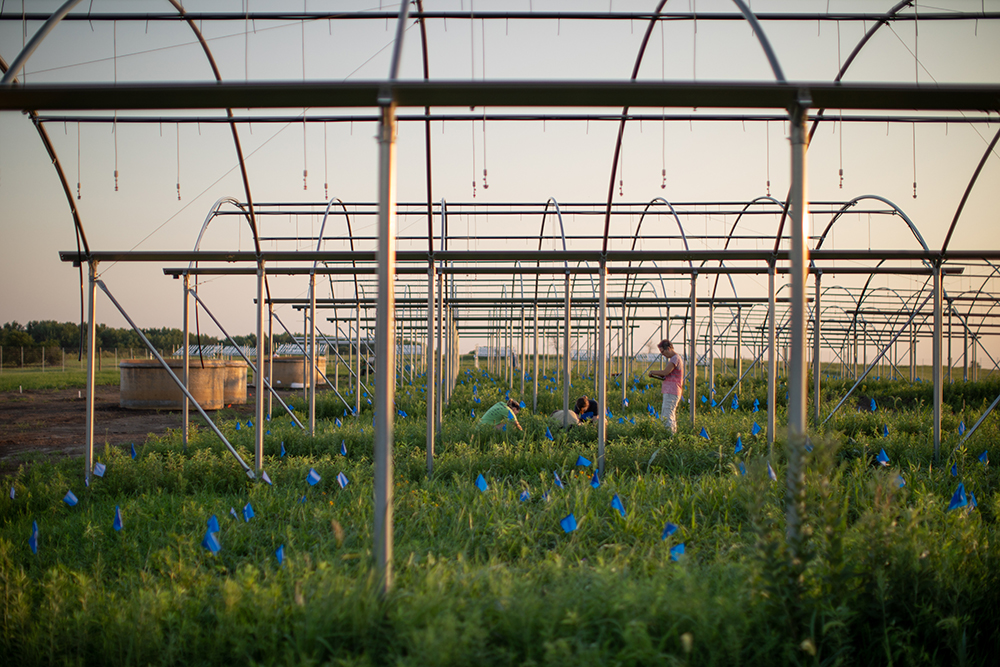Understanding Our Environment

June 2020 Issue
Understanding Our Environment is the internal newsletter for the Kansas Biological Survey & Center for Ecological Research community. Please email biosurvey@ku.edu regarding any errors or omissions.
Photo: Anderson County Prairie Preserve, a Nature Conservancy site managed as part of the KU Field Station.
Comings and Goings
Micah Unruh, a new Ph.D. student, has joined the lab of Sharon Billings, senior scientist and Dean's Professor of Ecology and Evolutionary Biology (EEB), this summer. Welcome, Micah.
Grants
Debbie Baker, researcher, has been awarded a two-year, $113,875 grant from the City of Lawrence for the project titled “Impact assessment of the Lawrence waste water treatment plant on the Wakarusa River: Follow-up assessment.” Ted Harris, Bio Survey assistant research professor, is co-PI.
Christopher Rogers, assistant research professor, is part of a team led by the University of the Virgin Islands that has been awarded a five-year, $20M National Science Foundation grant for the project titled “Ridge to reef processes and interdependent drivers of small island resilience.” Christopher will work on the freshwater and brackish water/mangrove side of the research, while his colleagues in the Virgin Islands will work on the coral reef side, though Christopher will do all the crustacean biodiversity portions of the project.
Karen Gaines, graduate student in the Aquatic Ecology Lab of Jim Thorp, senior scientist and professor of EEB, has received a travel grant from the KU EEB Graduate Student Organization to support her field work at the Bitter Lake National Wildlife Refuge in New Mexico this summer.
Publications
Lawrence Sheppard, postdoctoral researcher in the Reuman Lab, shares a “pop science” video he made about the previously published work he leads on synchrony and cicadas. The video demonstrates an example of the more mathematical side of ecology.
Two of Scott Campbell’s photos of the 2015 emergence of 17-year cicadas were included in an article published in Deutsche Welle’s online site. Scott is an aquatic ecologist and our facilities manager.

Maggie Wagner’s paper, “Heterosis of leaf and rhizosphere microbiomes in field-grown maize," has been accepted by the journal New Phytologist. Maggie is an assistant scientist and assistant professor of EEB.
Four new papers are forthcoming from the Bever/Schultz Lab. Jim Bever writes:
- The MAPS grant team (Microbiomes of Aquatic, Plant, and Soil Systems across Kansas), which includes many authors at KU, K-State and Fort Hays State, has published the paper "Connections and feedback: Aquatic,plant, and soil microbiomes in heterogeneous and changing environments" in BioScience developing hypotheses on the way that the microbiomes can mediate ecosystem responses to anthropogenic perturbations in terrestrial and aquatic systems.
- Hannah Reynolds (undergraduate student in the lab), Helen Alexander (professor of EEB), Haley Burrill (graduate student in the lab), Guangzhou Wang (postdoctoral researcher in the lab), and Jim Bever have a paper being published in Ecology and Evolution showing that native mycorrhizal fungi can increase the fitness of two native prairie annuals.
- Theo Michaels (graduate student in the lab), Maarten Eppinga (research colleague in Switzerland) and Jim Bever have a paper in press in Ecology that develops a conceptual framework for describing and analyzing patch dynamics in terrestrial systems with positive feedbacks.
- Liz Koziol (postdoctoral researcher in the lab) and co-authors Tim Crews (The Land Institute) and Jim Bever have a paper in press in Restoration Ecology that shows that success in restoring native plant diversity in prairie restoration increases with the density of native mycorrhizal fungal inocula.
Bob Timm shares the paper “Mammalian soil disturbance, plant cover, and soil nitrogen in prairie restoration" that he co-authored with Helen Alexander, Ben Sikes and Courtney (Coppinger) Barnes (an undergrad with Ben and Helen), published in the Transactions of the Kansas Academy of Science.
Christopher Rogers has published a paper that serves as the first phylogeny published on the fairy shrimp family Branchinectidae.
Shyamolina Ghosh, postdoctoral researcher in the Reuman Lab, shares her article, “Tail associations in ecological variables and their impact on extinction risk,” with co-authors Lawrence Sheppard and Dan Reuman, published in Ecosphere.
Sharon Billings shares that a chapter that she and Daniel Richter of Duke University wrote is featured in a book about the Critical Zone. The book is one part of a set of books and art installments that inform an online exhibition on the Critical Zones at the museum ZKM | Center for Art and Media in Karlsruhe, Germany.
George Pisani shares the article "Revisiting old data to answer modern conservation questions: Population modeling of two species in Kingsnakes, Lampropeltis sp. in Kansas," published in the Transactions of the Kansas Academy of Science, one of several papers he and co-author Daren Riedle have written over the past three years that make use of the extensive records (about 60,000) of Henry Fitch, former naturalist and professor, from the Field Station, electronically captured from Fitch's handwritten notes.
Promotions and Awards
Terry Loecke has been promoted to associate scientist and associate professor in the Environmental Studies Program.
Jim Bever was named John C. Wright/Byron Alexander Outstanding Graduate Mentor Award by CLAS. Jim is a senior scientist and Foundation Distinguished Professor of EEB.
Laura Podzikowski, graduate student in the Bever/Schultz Lab, has received a USDA NIFA (National Food and Agriculture) graduate fellowship. The three-year fellowship includes funding to support her dissertation work with the Dimensions of Biodiversity project (photo below) at the KU Field Station and totals $180,000 over the grant period. Her dissertation explores competing hypotheses describing how the diversity of plant communities drives both plant growth and soil nutrient retention. This project builds upon the research already under way as part of of the Dimensions grant at the KU Field station.

Of 10 KU Undergraduate Research Award recipients announced last week, three are students mentored by scientists at our research center. Jasmin Albert and Zai Erb are mentored by Dan Reuman, senior scientist and professor of EEB. Zoe Su-Huey Chan is mentored by Ben Sikes, associate scientist and associate professor of EEB.
KU Field Station
COVID-preparedness safety protocol training sessions for researchers and others who must use the KU Field Station are taking place there. Contact Sheena Parsons, Field Station manager, for more information and to schedule a training session.